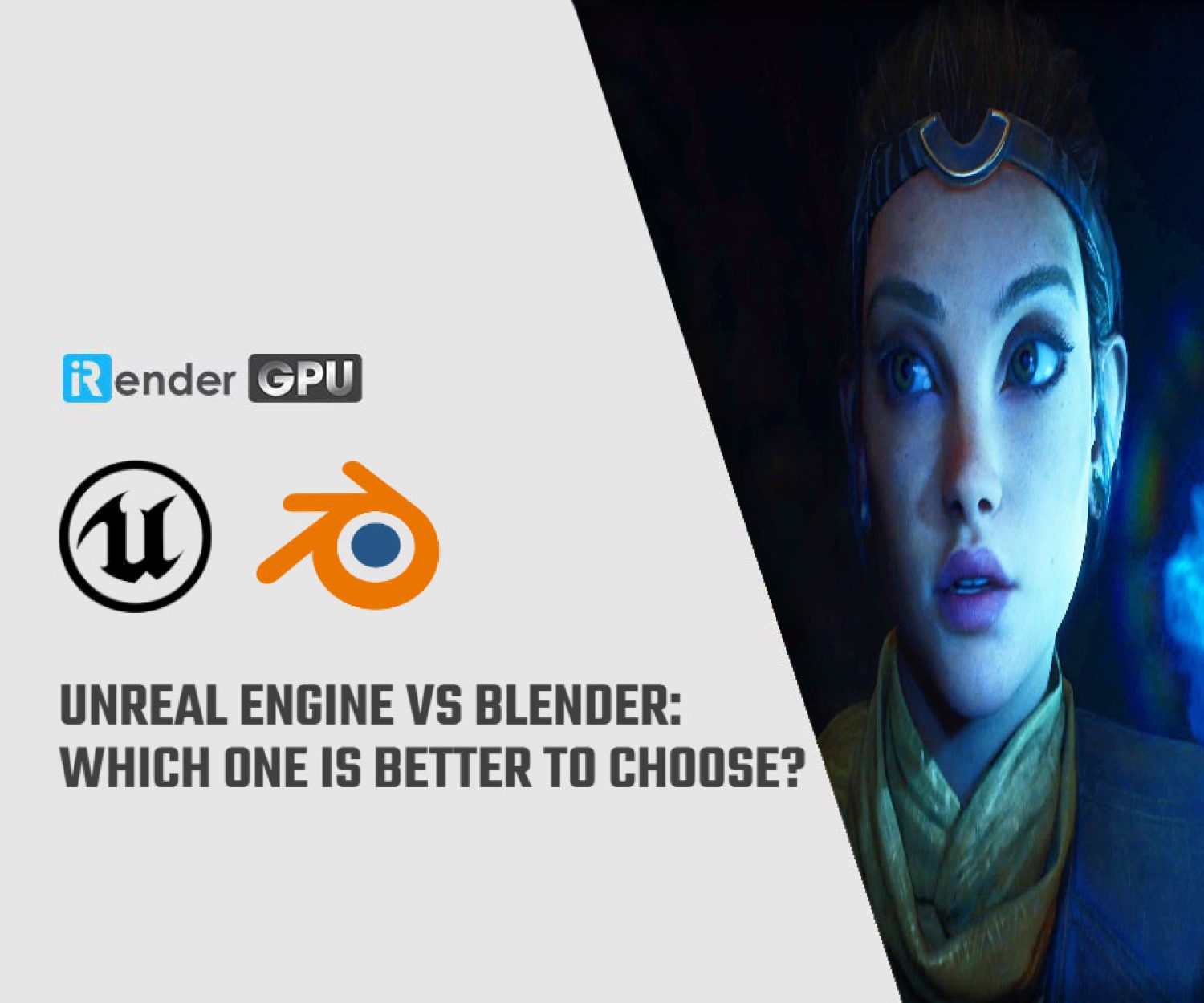Should We Use Unreal Engine 5 for Architecture?
Unreal Engine is known as a great game engine, but it has continuously pushed the boundaries of what is possible in a virtual environment. The release of Unreal Engine 5 has opened a new door for architecture. With diverse specialized features for archiviz, many architects and visualization experts are pondering whether this is the right tool for their needs.
In this blog, iRender will explore specific techniques/ tools and the potential benefits as well as things to consider when using Unreal Engine 5 for architecture so that you can make a good choice for your project.
Understanding of Unreal Engine 5 for Architecture
What is Unreal Engine 5 for Architecture?
Architecture, especially Architectural Visualization refers to the process of creating visual representations of architectural designs and spaces. It uses various tools and techniques to generate 2D and 3D images, animations, and interactive experiences that depict proposed or existing architectural structures. Architectural visualization can take the form of photorealistic renderings, virtual reality experiences, augmented reality applications, and interactive simulations.
Unreal Engine 5 is a powerful and cutting-edge real-time 3D creation platform developed by Epic Games. In the architecture area, Unreal Engine 5 offers various capabilities that can revolutionize the way architectural visualization is approached and executed. For example, real-time rendering, Nanite, Lumen Global Illumination, etc that we will dig deeper in the next part.
The Importance of Unreal Engine 5 for Architecture
- High Realism: Unreal Engine 5’s advanced real-time rendering capabilities and innovative features enable architects to create highly realistic and lifelike visualizations of design architecture.
- Interactive Design Exploration: The software enables real-time exploration and interaction with architectural designs, allowing architects and clients to navigate the space, perform iterations of design, and experience your environment flexibly.
- Advanced Communication and Collaboration: Unreal Engine 5 facilitates collaborative design reviews and client presentations through its rich and interactive capabilities.
- Flexibility and Adaptability: Unreal Engine 5’s compatibility with various data formats, including CAD and BIM models, makes it a versatile tool for integrating design architecture.
- Enhanced Client Experience: Unreal Engine 5 empowers architects to deliver enhanced client experiences through the ability to create vibrant, interactive, and visually impressive presentations of architectural designs.

Image source: unrealengine.com
Tools and Techniques of Unreal Engine 5 for Architecture
Nanite Virtualized Micropolygon Geometry
Unreal Engine 5’s Nanite technology allows architects to import highly detailed 3D models without worrying about the typical constraints of polygon budgets or manual LOD (Level of Detail) creation. This means that intricate and complex architectural details, such as ornate facades, intricate interior designs, and textured surfaces, can be faithfully represented in the visualization without sacrificing performance.
Lumen Global Illumination
Lumen’s real-time global illumination provides architects with the ability to create visually stunning architectural visualizations with accurate and dynamic lighting. This includes the rendering of natural lighting conditions, lifelike shadows, and realistic light interactions, all of which contribute to the creation of compelling and immersive architectural presentations.
Quixel Megascans Integration
Unreal Engine 5 seamlessly integrates with Quixel Megascans, a massive library of high-quality, photorealistic 3D scanned materials. Architects can leverage this integration to access a vast array of materials, surfaces, and objects, allowing them to populate their architectural visualizations with highly detailed and realistic elements.
High-fidelity Materials and Textures
This software offers a range of material and texturing tools that enable architects to achieve high levels of visual realism. The Material Editor of Unreal Engine 5 allows you to customize the surface of objects with properties such as opacity, smoothness, roughness, metal quality… In addition, the Landscape tool also helps in building the environment surrounded such as a grass field, a sandy beach, a cobblestone road…
From simulating natural materials such as wood, stone, and concrete to creating realistic glass, metal, and fabric textures, architects can detail every aspect of architectural design to create compelling visual images.

Image source: unrealengine.com
Datasmith Workflow
Unreal Engine 5’s Datasmith plugin simplifies the process of importing 3D CAD and BIM (Building Information Modeling) data into the engine. This seamless workflow integration allows architects to efficiently translate their design data into interactive and visually striking architectural visualizations.
Real-time Ray Tracing
Unreal Engine 5 incorporates real-time ray tracing capabilities, enabling architects to achieve cinematic-quality rendering with accurate reflections, shadows, and ambient occlusion. This technology adds an extra layer of visual fidelity to architectural visualizations, enhancing the overall realism of the rendered scenes.
Interactive Presentations and VR Experiences
The software empowers architects to create interactive presentations and immersive virtual reality (VR) experiences of their architectural designs. This allows clients and stakeholders to explore and interact with the architectural spaces in real-time, fostering a deeper understanding of the design and its spatial qualities.
MetaHumans Animator
MetaHumans allows the creation of high-fidelity digital humans with high realism. MetaHumans for architecture could incorporate animated digital humans into architectural visualizations to depict how people might interact with and move through designed spaces. For example, animated characters could be utilized to showcase the flow of people in a commercial building, the usage of public spaces, or the functionality of various architectural features.

Image source: unrealengine.com
Pros and Cons of Unreal Engine 5 for Architecture
|
Pros |
Cons |
| Realistic Visualization and Interactive Presentations | Steep Learning Curve |
| Seamless Integration with Design Tools (3D CAD and BIM data through the Datasmith plugin) | Powerful Hardware Requirements to achieve good results |
| Immersive VR and AR Experiences | Resources Intensiveness (time, effort, power) to reach high realism |
| Cost-saving and eco-friendly solution | |
| Helpful for gaining customer feedback and detecting errors |
Besides the great advantages of Unreal Engine 5 for architecture, there are still certain limitations. However, the Unreal Engine community is where users can support each other to solve those challenges. The community is known for its passion, creativity, and willingness to help and support fellow developers. Whether you’re a beginner looking to learn the engine or an experienced developer seeking to collaborate on projects, the Unreal Engine community offers a wealth of resources and opportunities for growth and connection.

Image source: unrealengine.com
Conclusion
In summary, the decision to use Unreal Engine 5 for architecture should be carefully considered based on the specific needs and capabilities of each project and team. While its advanced features and real-time visualization provide significant benefits, the hardware requirements and learning curve can pose a challenge for some professionals and organizations. However, Unreal Engine 5 offers an exciting opportunity to enhance the quality and impact of architectural visualizations, potentially reshaping the way we experience and interact with architectural designs in the digital sector.
iRender - Best Cloud Rendering Service for Unreal Engine 5
If you are looking for a cloud rendering service with good support for Unreal Engine as well as its render engines and plugins, iRender is the perfect choice.
iRender provides high-configuration servers that increase CPU and GPU rendering speeds. We offer the most powerful RTX 4090 configuration packages on the market, all equipped with AMD RyzenTM ThreadripperTM PRO 3955WX @ 3.9 – 4.2GHz and AMD Ryzen™ Threadripper™ PRO 5975WX @ 3.6 – 4.5GHz processors, 256GB RAM and 2T NVMe SSD hard drive capacity. With a wide range of GPU servers (1/2/4/6/8x) – RTX 4090, you can choose the server that suits your needs to start the rendering process.
Our service will give you full control over the servers you rent. Therefore, you are free to create your own working environment. In addition, we are committed to using 100% solar renewable energy towards environmental sustainability. Together with real-human 24/7 support, we guarantee to bring you the best rendering experience.
Check out Unreal Engine rendering performance on our servers below
REGISTER NOW to get a trial and receive a 100% bonus promotion for your first transaction within 24 hours of registration with us.

For more detailed information, please contact us via Live chat 24/7 or WhatsApp: +(84) 962868890 or Email: [email protected]
iRender – Happy Rendering!
Related Posts
The latest creative news from Unreal Engine Cloud rendering.





